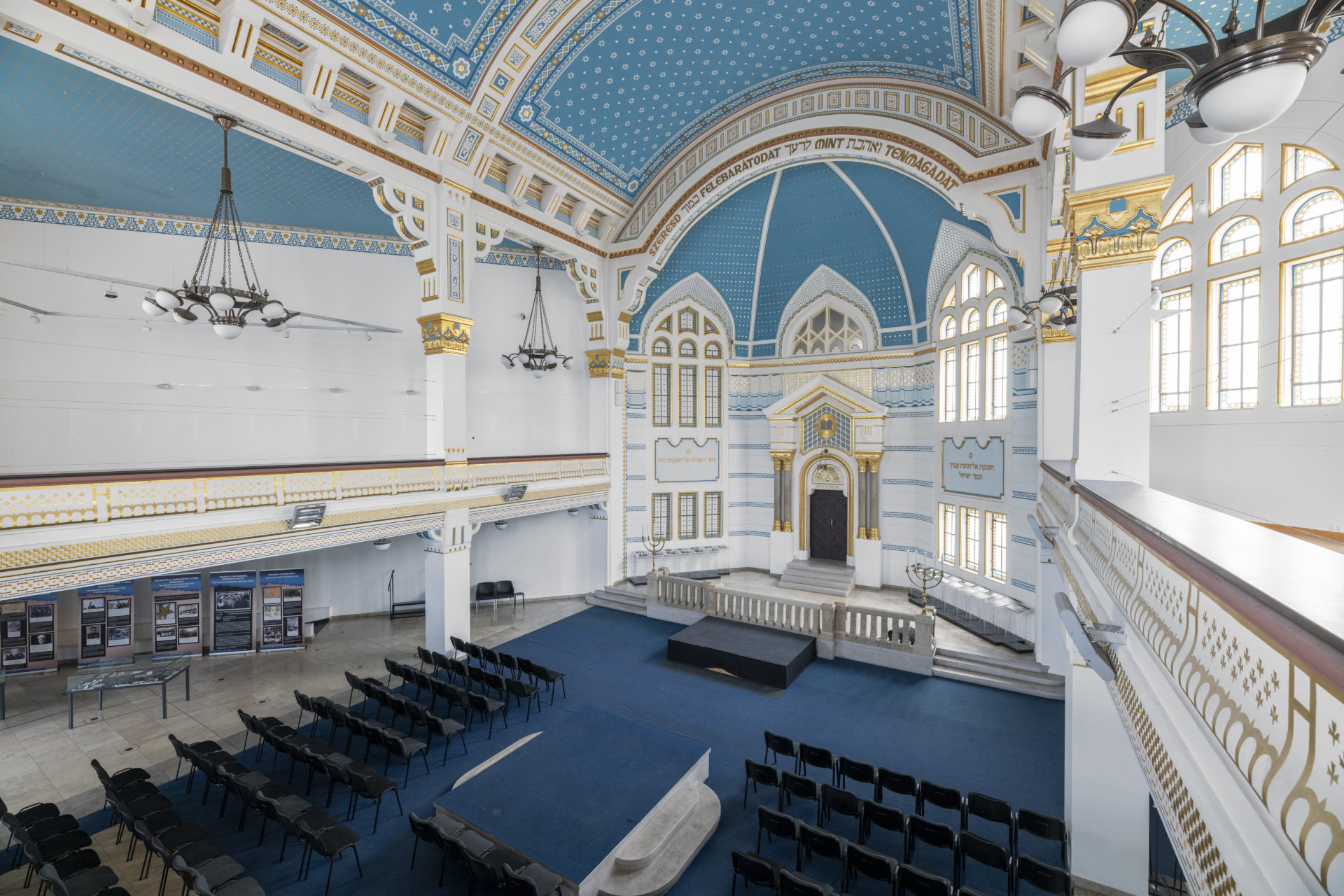
Since the opening of the Holocaust Memorial Center, the Synagogue is a venue for cultural events, conferences and periodic exhibitions.
It has been designed, displaying elements of then fashionable eclecticism, by the most productive architect of synagogues at the turn of the 19th and 20th centuries, Lipót (Leopold) Baumhorn. The land for the construction was donated by industrialist Géza Belatini Braun. The construction works started only in 1923 and the building, erected from donations, was consecrated on January 6 1924.
It was functioning as a facility for worship until 1944. In 1944-45 it was used as an internment camp and following 1945 it hosted occasionally religious ceremonies. In parts of the building a kosher kitchen and a seniors club functioned. In the main building, under the women’s gallery, the Hasomer Hacair and Kidma Jewish youth organizations were situated after 1990. By this time, the Synagogue was in dilapidated condition.
In 1999, the Federation of Jewish Communities in Hungary offered the building for the purposes of the Holocaust Documentation Center and Memorial Collection Public Foundation. The restoration of the historic monument stared in 2003.
Based on a photo from the 1930s, 800 sq meters of decorative painting, 760 meters of metallic gold paint and 800 meters of plaster stucco have been reconstructed. The walls have been reinforced and modern thermal insulation has been applied.
At the ground floor, glass benches with portraits and names symbolize the members of the destroyed Jewish communities.
“A painful majority of the victims of the Holocaust were our compatriots of Jewish fate. Therefore, an empty Synagogue, a void, a space with lost sacrality can be an authentic, universal and national venue of remembrance.”
Architect István Mányi
Galériák
| Név |
|---|
| Páva utcai zsinagóga – ma |
| Páva utcai zsinagóga 2002-ben |
| Páva utcai zsinagóga 1945-ig |